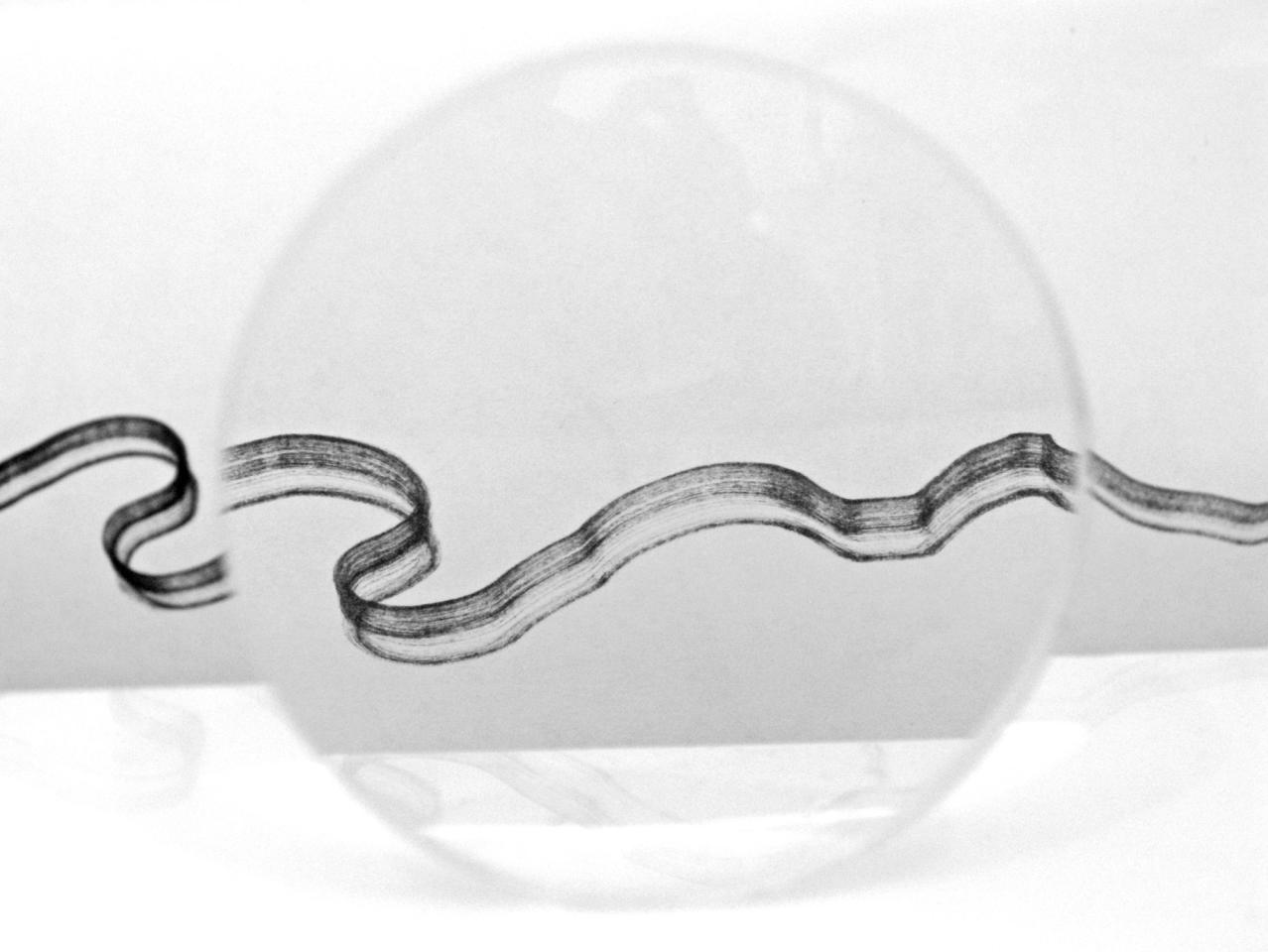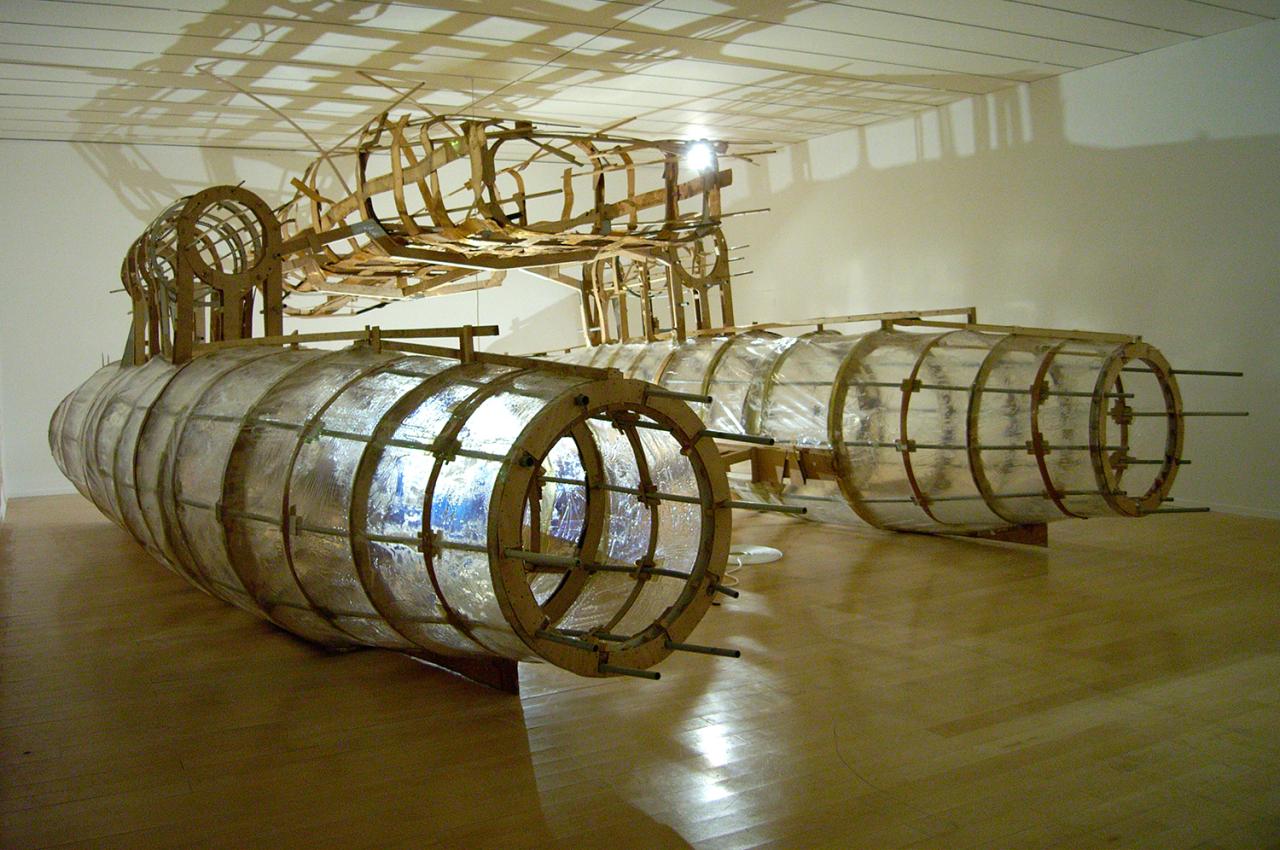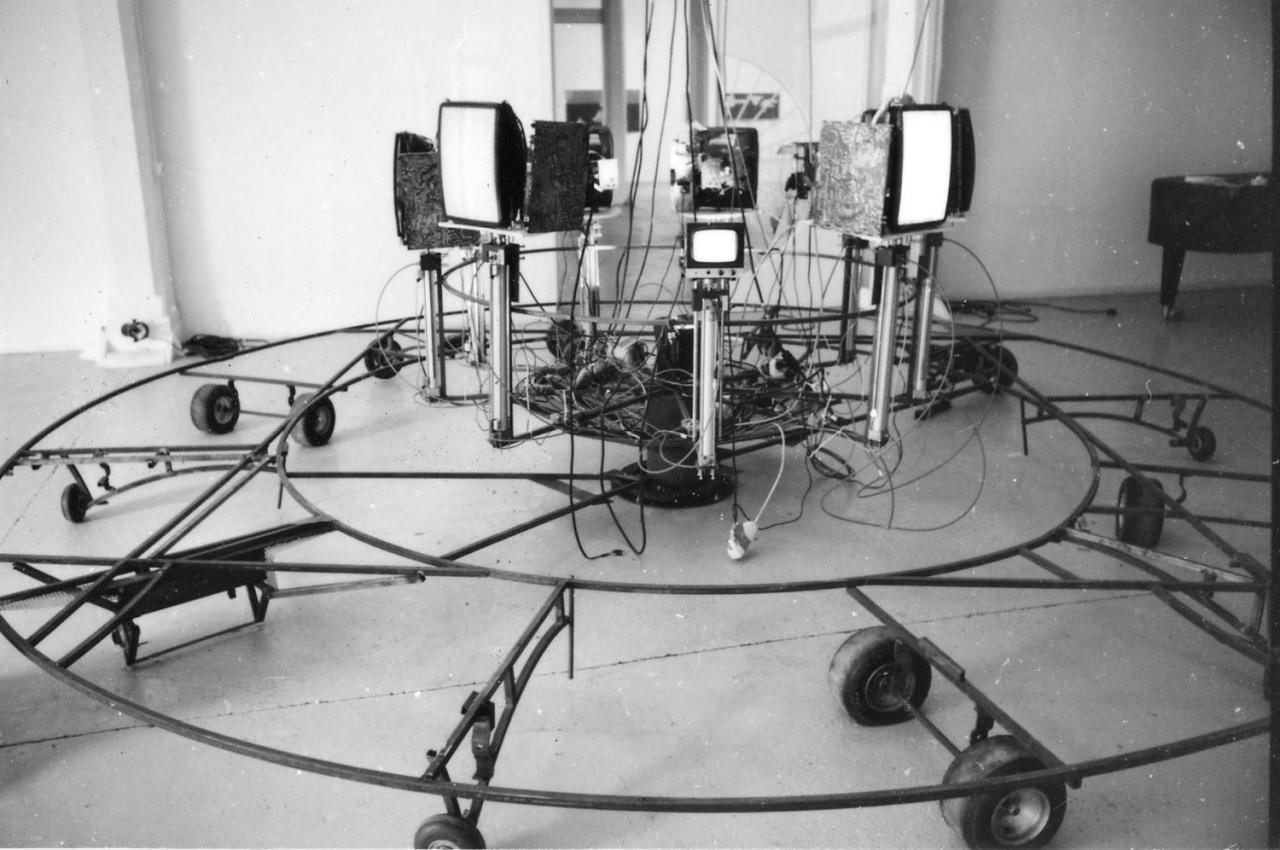Bertrand Grosol
Born in 1959
Lives and works in Lyon



About the exhibition at CRAC Sete, 2009
Excerpt from the exhibition booklet Dialogue, Bertrand Grosol et Nicolas Floc’h, Centre Régional d’Art Contemporain, Sete
Bertrand Grosol is at once a sculptor, a filmmaker, a composer, a poet, etc. – categories which his artistic praxis challenges through the permanent shifts it operates. The various projects he works on simultaneously and nurtures on a constant basis reveal stories that are hidden in the cracks of reality. Because the work itself contains its own destruction, photographic and videographic documents and journal-like notebooks record the trace of these convolutions.
ORI is a project that was initiated and presented at La Réserve in Montpellier in 2003, and which consisted in gradually burying an engraving of the inner ear under 128 tonnes of black asphalt. In Martinique, his place of birth, Bertrand Grosol overlaid the same motif with the map of the island, as if to record various acoustic and visual data in different parts of the island. […]
MamiWata is “an inner navigation project built on an imaginary floating structure designed to connect three seas – the Mediterranean, the North Sea, and the Black Sea – via inland navigation and canals. A journey against the current from South to North, an inverted flow, a singular experiment.”
The project originated in 1995 during the course of a discussion, then later became a fictional journey and a solitary experience as from 2004, with the construction, in the former salt warehouses on the banks of the Saône, of the craft MamiWata L820L650H320, a tubular wood and metal frame coated in a layer of resin. In 2005, concurrently to the 8th Lyon Biennale, the craft was set afloat at the junction of the Saône and Rhône rivers. In 2007, MamiWata L820L650H320 was shown at the Museum of Contemporary Art in Lyon. The programmed destruction of the symbolic image of the boat’s model brought the project to a close. […]
The MamiWata project exhibits a process of empirical exploration, divided into chapters and open to departures and digressions. The piece never ceases to reinvent itself. […] By recording the invisible metamorphoses of the river drifts, the MamiWata project retraces the adventure of a utopian and initiatory journey at the far reaches of floating worlds.
“Because of its protracted nature and its slow and consistent pace, my work method does not produce exhibition pieces, but rather allows me to invent constructions that expose to view what is being done at any given time. These constructions disappear or evolve as the project moves on.” B.G.